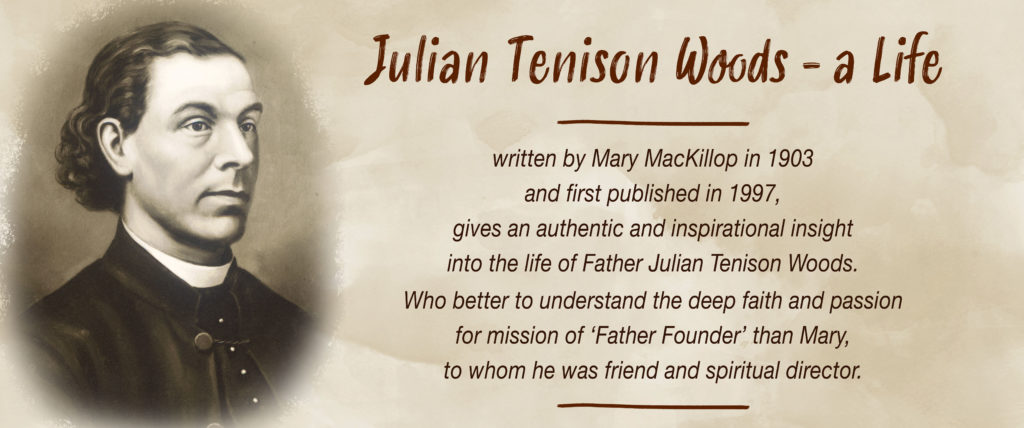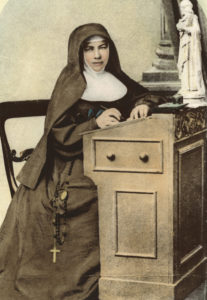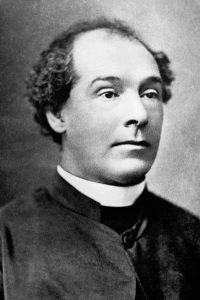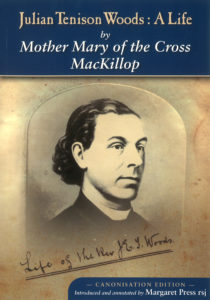
Chapters 19th and 20th
On Friday, 4th December, the Bishop arrived from Europe, bringing some priests and a community of Dominican Nuns, who would take up the higher education.
The Inspector intended the new Institute of St Joseph for parochial schools, and schools for the children of the poorer classes who were often neglected in small country places…[i]
When the priest arrived in these far-off places, his time was generally limited: he could not wait to instruct the young …[ii]

Father Woods had ten years’ experience of this difficulty before he became Director of Catholic Education. He knew it did not require very highly cultured people to impart the simple instruction needed – a plain homely education would be sufficient. Therefore, he decided to receive into the convent many who were not qualified to teach high classes, but who could certainly instruct little children in the rudiments of their religion…[iii]
Besides, what great services these good women could render to the orphans or the inmates of the Refuge – for the rule adopted by the Sisters expressly said that they must ‘Do all the good they can, and never see an evil without trying how they might remedy it.’
A book of rules and instructions, with prayers and devotions for the use of the Sisters, had been prepared; and now, with the approbation of the Bishop, was published.
A great deal had been done by the Founder, aided by the first Sisters, to arrange for perfect uniformity in the schools and branch houses…[iv]
Tuesday, Feast of the Immaculate Conception was a First Communion day for St Joseph’s children. Consequently there were 300 girls in white veils and about 40 boys in surplices….[v]
His Lordship said,
The untiring zeal and self-devotion of the Very Rev. Father Woods have relieved me from all anxiety of providing for the Catholic education of the humbler classers, dearer still to me, and more demanding my pastoral solicitude, because of their present and future positions in society. Amongst the co-operators in the grand sublime work committed to my charge, there is a department which most emphatically demands my most pleasing and grateful recognition and your deep appreciation – I mean the Sisters of St Joseph…[vi]
[Father Woods] arranged for a retreat to be given to the Sisters, who now numbered forty. The convent being too small for so many, a house in Rosetta Terrace was kindly lent for the purpose by the Hon. E. Solomon. The kindness shown by the Jewish community has been remarkable, but then, St Joseph was a Jew…[vii]

Arrangements were made by the Bishops to hold a Synod of the Catholic Church in Australia the second week after Easter…[viii] Father Woods met the Bishop of Brisbane at the Synod…[ix] Early in September, a letter arrived from Dr Quinn, who was on the eve of his departure for Rome, requesting the Sisters to go to Brisbane where a school was ready for them…[x]
On 8th December, four Sisters left for Brisbane, accompanied by Sister Mary, who was to establish the new community and return to Adelaide. Father Woods was expected to go to Brisbane according to the invitation of Dr Quinn, but he delayed his visit till long afterwards. Had he gone then, much sorrow and suffering might have been spared him. By remaining in Adelaide, where he considered his duty obliged him to remain, with the best intentions, everything seemed to go wrong.
An old and sincere friend, speaking of the troubles which beset him in the management of the schools and other charitable works, said the Founder was ‘[t]oo innocent; too much of the dove and too little of the serpent in his composition.’ He could not believe that people with a fair appearance of piety were hypocrites. Unless he saw the evil done under his own eyes, he could not believe any wrong of those whom he trusted…[xi]
And thus the storm gathered.[xii]

This extract is taken from:
Chapters 19th and 20th of Julian Tenison Woods: A Life has been used with the kind permission of the Trustees of the Sisters of Saint Joseph 1997 and the publishers, St Paul’s Publications.
If you would like to read the full text, including an informative Introduction, footnotes and an index, this book is available online and from some Mary MacKillop Centres.
Carmel Jones rsj
Footnotes:
[i] Chapter 19th, p. 121
[ii] Chapter 19th, p. 121
[iii] Chapter 19th, p. 121
[iv] Chapter 19th, p. 122
[v] Chapter 19th, p. 122
[vi] Chapter 19th, p. 122
[vii] Chapter 19th, p. 124
[viii] Chapter 20th, p. 126
[ix] Chapter 20th, p. 129
[x] Chapter 20th, p. 129
[xi] Chapter 20th, p. 130
[xii] Chapter 20th, p. 130
